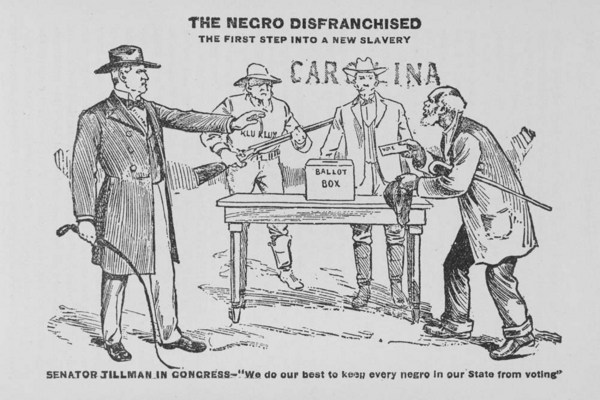
In Mississippi, the method of controlling black votes and regulating their economic and public lives by full-scale and openly brutal violence was known as the First Mississippi Plan of 1875. Whites openly resorted to violence and fraud to control the black vote, shooting down black voters "just like birds." This ruthless and bloody revolution devastated the black vote in Mississippi, and fully 66 percent of the blacks registered to vote in the state failed to cast ballots in the presidential election of 1880. Of those who did vote, almost 50 percent voted Democratic rather than face the wrath of whites in the state. The white vigilantes made no attempt to disguise themselves as in the days of the Ku Klux Klan, and so complete was their victory that the Republican governor fled the state rather than face impeachment charges by the newly elected legislature.

When Mississippi began formally and legally to segregate and disfranchise blacks by changing its state constitution and passing supportive legislation in the 1890s, knowing observers referred to these legal moves as the Second Mississippi Plan. The principal difference between the two plans is that the latter did not resort to violence in order to eliminate the black vote. The Second Mississippi Plan did it by law. Other states followed suit to one degree or another, with only a few black gerrymandered districts in North Carolina, Alabama, and Mississippi witnessing significant and continuing black political autonomy up to 1900.

Almost all the southern states passed statutes restricting suffrage in the years from 1871 to 1889. Various registration laws, such as poll taxes, were established in Georgia in 1871 and 1877, in Virginia in 1877 and 1884, in Mississippi in 1876, in South Carolina in 1882, and in Florida in 1888. The effects were devastating. Over half the blacks who voted in Georgia and South Carolina in 1880 vanished from the polls in 1888. The drop in Florida was 27 percent. In places like Alabama, for example, where blacks equaled almost half the population, no African Americans were sent to the legislature after 1876. (source: Jim Crow History)
No comments:
Post a Comment